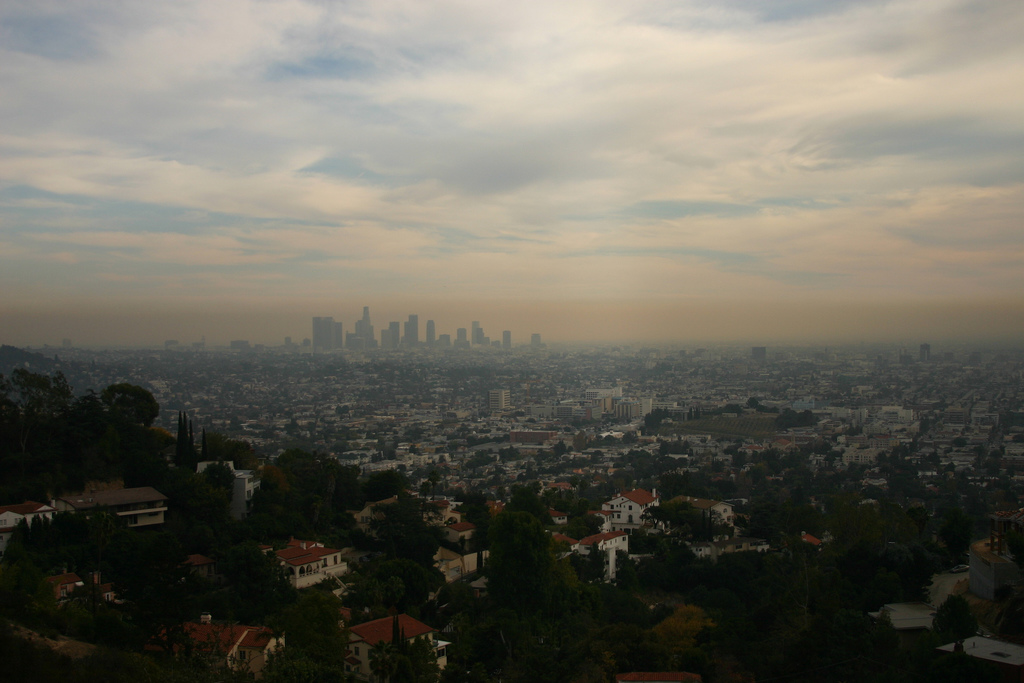The EPA may publish window stickers for all new cars that list their fuel efficiency, but it's not clear the agency's acting administrator has read them.
At BloombergNEF's Future Mobility summit in San Francisco, on Monday, Acting Administrator Andrew Wheeler told Bloomberg, "It is not the EPA’s role to promote a particular type of fuel, such as electricity."
Indeed, nothing in the EPA's mandate gives it authority directly over what fuels cars should use. A quick check of EPA labels, however, shows that cars running on electricity average three to four times the efficiency of the average car running on gasoline. The best more than double the efficiency of the best gasoline cars.
DON'T MISS: Trump administration releases proposal to weaken fuel economy, emissions standards
And whatever Wheeler's prognostications, the EPA does have a legal interest in higher fuel efficiency, because it has a direct effect on cleaner air, which the EPA was founded in part to ensure.
To clean up air quality requires reducing emissions from the two largest societal emission sources: cars and trucks; and electric power plants.
Both EPA and state standards limit emissions of unburned hydrocarbons (fuel), carbon monoxide, and oxides of nitrogen, as well as particulate matter, to certain percentages of the overall output of exhaust pipes and smokestacks from those and other industrial and municipal sources. The bulk of other exhaust from cars, trucks, and smokestacks consists of non-toxic water vapor and carbon dioxide.

Smog over Los Angeles, courtesy Flickr user steven-buss
Logically, the EPA should have an interest in these emissions too. EPA and state regulations limit the proportion of total exhaust that toxic, so-called "criteria emissions"—the unburned fuel, carbon monoxide, NOx, and particulates—can make up.
Improving efficiency, however, can also have a beneficial effect by reducing total exhaust from smokestacks and tailpipes—including toxic criteria emissions—just as limiting the total number of machines emitting such pollution can.
In response to a 2007 Supreme Court ruling, the EPA also ruled in 2009 (a few months after President Obama took office) that carbon-dioxide is also harmful to human health, because it is a primary contributor to global warming. Since carbon dioxide is a natural byproduct of all combustion, the only way to reduce it is to burn less fuel—by making engines and furnaces more efficient or by reducing their number.
READ THIS: California warns it won't follow lower EPA fuel economy, emissions rules
The EPA also sets air quality targets for cities in the U.S., which the cities must reach or face fines or loss of federal resources. Los Angeles has been a chronic violator of the air quality standards, because of its population, its climate, and its topography. The nitrogen oxides emitted from its millions of cars turns into smog when baked in the atmosphere by the region's abundant sunlight, and coastal hills trap the resulting smog beneath prevailing winds in areas where much of the population lives, further collecting and baking it.
To address those conditions, California has been setting emissions standards for cars since before President Nixon created the EPA in 1970. Consequently, California has had the right, afforded by Congress, to set its own, tighter emissions standards for cars. Those now include requiring a certain percentage of the cars sold in the state to be electric.
When it comes to CO2 emissions, California's standards also effectively require engines to get better fuel economy.

Mary Nichols, chief, California Air Resources Board
If the EPA has an interest in reducing air pollution (which Wheeler agrees it does), it seems it should also have an interest in promoting the cars that use the least fuel and which have no tailpipes—electric cars.
Yet at the conference in San Francisco, Wheeler told Bloomberg that choosing electric cars, "Is not grounds for concerns for the EPA." He said the EPA wants to improve fuel efficiency, but that in its latest proposal to roll back emissions and fuel economy standards, the agency also aims to reduce traffic deaths (a goal which falls under the purview of the NHTSA), and to reduce the price of cars. The proposal has put the EPA at loggerheads with California.
In San Francisco, Wheeler met with Mary Nichols, chairwoman of the California Air Resources Board to discuss the EPA's proposal to rescind scheduled increases in fuel economy and emissions standards and to revoke the state's waiver that has allowed it to set its own emissions standards for nearly 50 years. California has already sued the EPA over the proposal in a case that seems likely to end up back at the Supreme Court.
READ ALSO: California and 16 states sue EPA over emissions rules
Nichols said the "disagreement may turn into a legal disagreement at some point."
Wheeler said the two parties are "pretty far apart" on the issue and called the increase in CO2 emissions from the EPA's proposal "negligible."
In the end, he said, "this is not a two-way negotiation. We do have some hard deadlines." He said the agency is expected to finalize its new requirements by early April.












